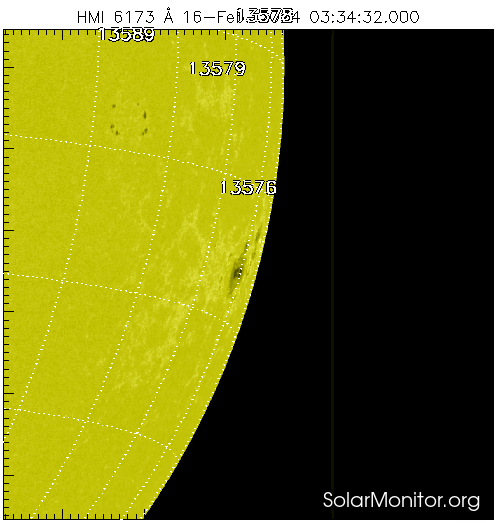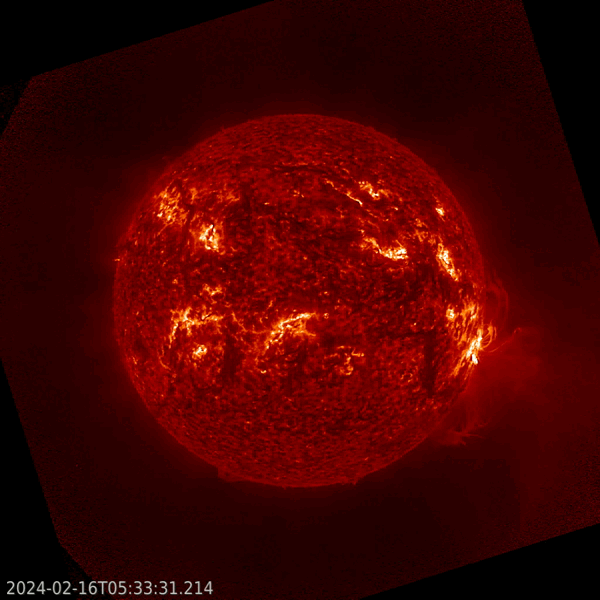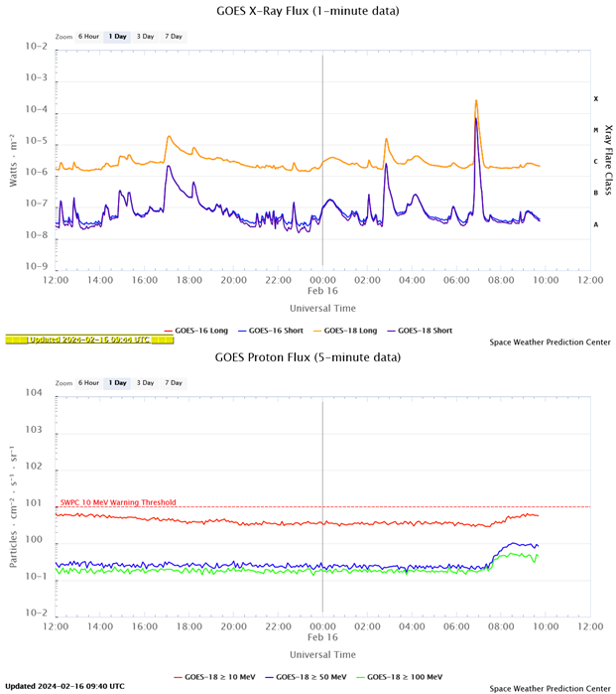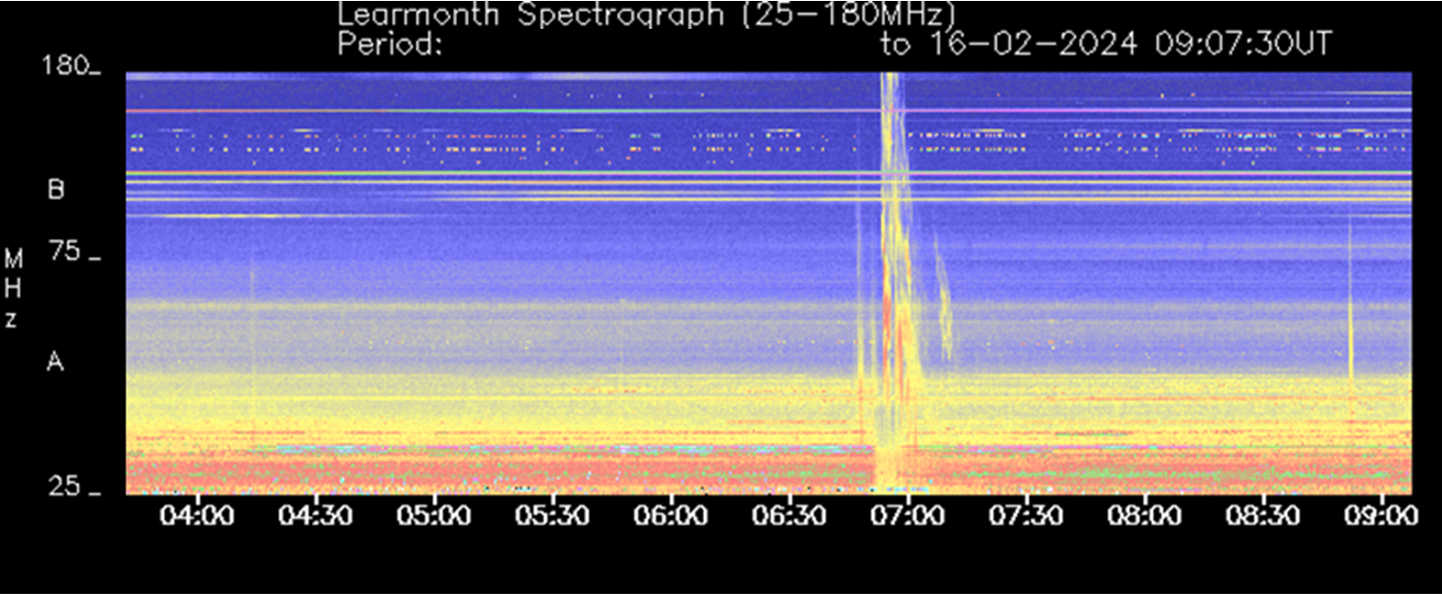After 3 days with only a few, low-level moderate flares, NOAA 3576 produced an X2.5 flare on 16 February (GOES). Lasting only 16 minutes, this short-lived flare peaked at 06:53UTC. NOAA 3576 is close to the southwest solar limb, and displayed a big and complex main spot while rotating over the solar disk during the past 2 weeks. The SDO image underneath shows the active region in white light just hours before its eruption.

Imagery in extreme ultraviolet show an impressive eruption with mass being ejected to the southwest. The image underneath was made by the GOES-16 SUVI instrument at 30.4 nm, showing the Sun at a temperature around 80.000 degrees. The eruption stretches all the way outside SUVI's (wide!) field of view, and as such towered at least 900.000 km above the Sun's surface.

As could be expected from the location of the sunspot and the strength of the eruption, the proton flux started to increase within half an hour after the flare's peak. The greater than 10 MeV proton flux is currently (10:00 UTC) at 6 pfu, so still below the 10 MeV alert threshold. At 07:10 UTC, COMESEP has issued a warning for a possible proton event that thus may affect HF communications over the poles (Polar Cap Absorption event) if the alert threshold is reached. GOES data show an increase of the fluxes of higher energy protons too, albeit not that impressive (for the moment).

The eruption was very noticeable at radio frequencies too. It was a Ten-flare, meaning that the eruption doubled the 10.7 cm radio flux, with an observed increase of 380 sfu over the current values near 180 sfu. Radio stations at Learmonth (SWS, Australia) and Yamagawa (NICT, Japan) indicated the presence of a strong Type II radio burst (see the STCE's SWx classification page), indicative of a coronal mass ejection (CME) with the shock speed calculated to be around 750 km/s (NOAA/SWPC events page). The bulk of the CME is certainly directed to the south of the Earth, but forecasters are standing-by coronagraphic images to determine if the CME has an earth-directed component (glancing blow).

The X-class flare affected HF communications (3-30 MHz) over the Indian Ocean, Antactica, East-Africa, the Arabian Peninsula, Iran, Pakistan, Indian, China, Southeast Asia, and Australia. This can be seen on the D-RAP map underneath (NOAA/SWPC) underneath. An advisory to civil aviation has been issued (PECASUS/SWPC).

Based on Intermagnet (BGS) data, several magnetic observatories such as in India (Hyderabad) and Australia (Learmonth) reported a solar flare effect (SFE), with one or more components of the magnetic field strength showing a spike (" magnetic crochet") up to 23 nT. For comparison, the Carrington flare showed an SFE of 110 nT (Cliver & Svalgaard, 2004).






